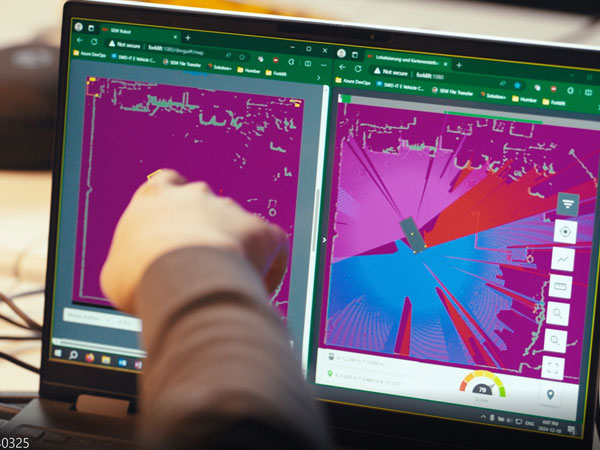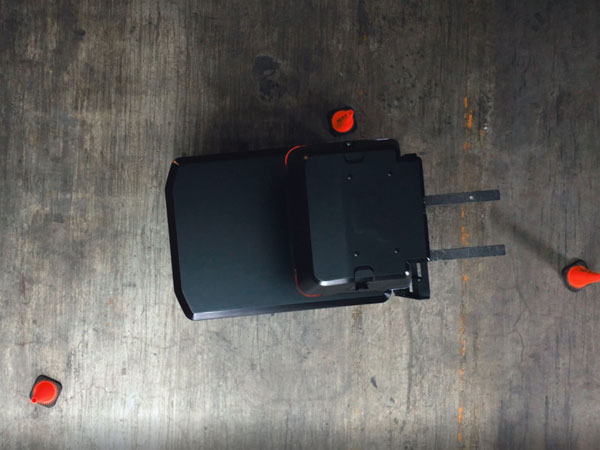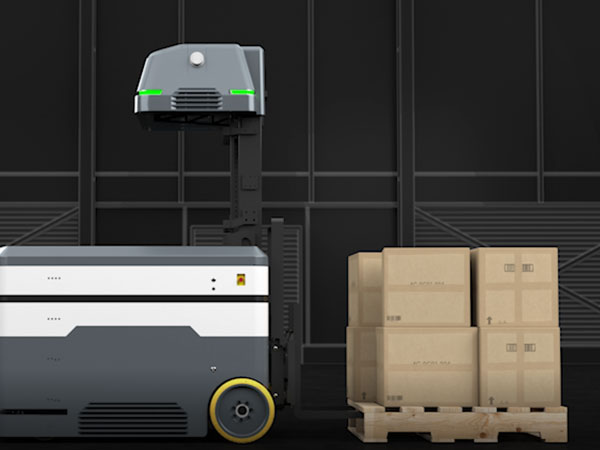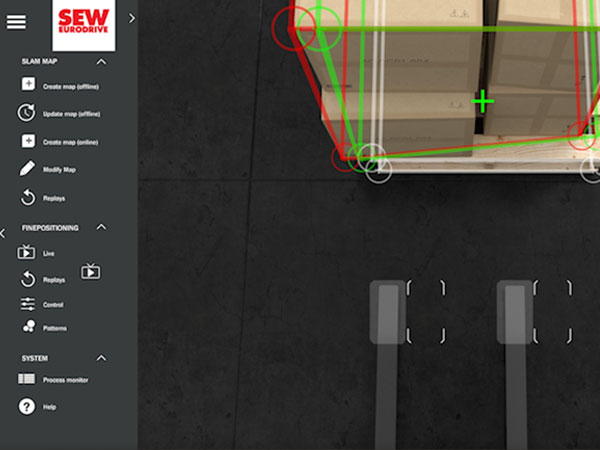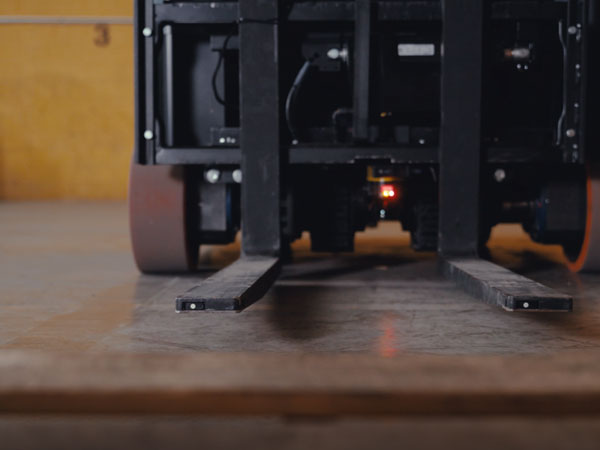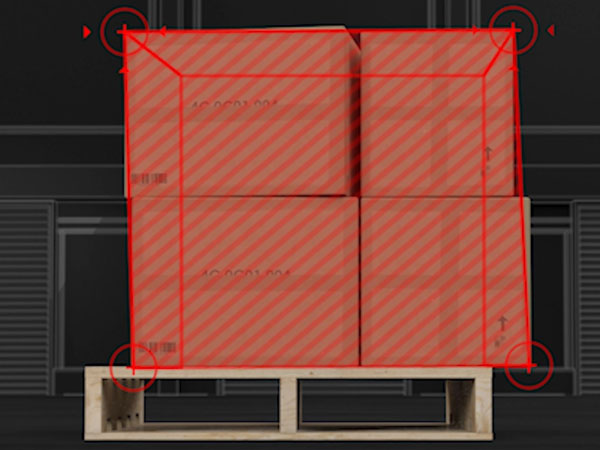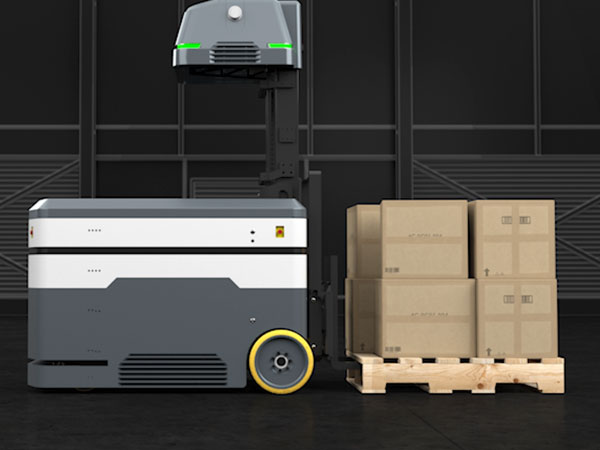Life Long Mapping
Phase 2: Software Development | Integration
Life-Long Mapping in Autonomous Forklift Navigation
Life-long mapping refers to the continuous and autonomous updating of an environment map, enabling a forklift to navigate efficiently in dynamic and complex operational settings. This adaptive mapping system allows the forklift to detect, analyze, and respond to environmental changes, including the presence of additional vehicles, stationary objects, and human operators.
By leveraging advanced sensor technologies and real-time data processing, the system ensures high-precision localization and obstacle avoidance, thereby enhancing operational safety and efficiency. The integration of life-long mapping into autonomous forklift navigation is particularly beneficial in industrial and warehousing environments, where spatial configurations and movement patterns frequently change. This capability facilitates seamless adaptation to evolving conditions, reducing downtime and optimizing workflow efficiency.
Furthermore, the system’s ability to interact with dynamic elements in the environment enhances cooperative operations, minimizing the risk of collisions and improving the overall coordination of autonomous and human-driven vehicles. As a result, life-long mapping serves as a critical component in the advancement of intelligent logistics and automation.
Side Shifting
Phase 2: Software Development | Integration
Side-Shifting Mechanism in Autonomous Forklift Operation
The side-shifting feature in autonomous forklifts enables dynamic lateral adjustment of the forks in response to pallet alignment variations. This functionality is particularly advantageous in scenarios where pallets are not centrally positioned, as it allows the forks to compensate for misalignments without requiring repeated repositioning attempts.
By facilitating precise fork alignment with minimal maneuvering, the side-shifting mechanism enhances operational efficiency, reducing the time and energy expended during material handling tasks. This capability is especially beneficial in high-throughput environments, where seamless load acquisition and placement are critical to maintaining workflow continuity. Furthermore, the automated adjustment minimizes the risk of improper load handling, thereby contributing to improved safety and reduced equipment wear.
The integration of side-shifting technology into autonomous forklifts represents a significant advancement in material handling automation, optimizing performance and ensuring reliable operation in dynamic and unpredictable warehouse or industrial settings.
Load Detection Software
Phase 2: Software Development | Integration
Advanced Load Detection and Perception System in Autonomous Forklifts
The load detection software in autonomous forklifts is designed to identify off-balance payloads and execute real-time corrective adjustments to ensure safe and efficient material handling. This system leverages a sophisticated perception stack, incorporating IFM’s 03R perception technology in conjunction with a 3D point cloud load detection framework.
By actively detecting and analyzing a diverse range of pallet types, the perception stack can isolate the load, calculate its geometric center, and dynamically adjust the fork position to optimize load stability during pickup operations. This capability enhances both operational safety and precision, mitigating the risk of improper load handling that could lead to inefficiencies or equipment damage.
The integration of this advanced perception system into autonomous forklifts is particularly advantageous in modern industrial automation settings, where adaptability and precision are paramount. By ensuring accurate load detection and adjustment, the system significantly improves workflow efficiency, reduces operational downtime, and enhances the overall reliability of material handling processes
The Problem
By now, most of us are familiar with the benefits of integrating Autonomous Guided Vehicles into motion control plans. AGVs play a vital role in systemizing and automating throughput in various industries, specifically those with integrated end-to-end load-handling systems, allowing AGVs to run continuously.
Solving motion control problems has always been SEW-Eurodrive’s primary focus. “Inspiration for our ideas comes from our customers,” says Brendan Daniels, Chief Design Engineer. “When we are onsite at a clients’ facility, they may unwillingly discuss problems that, in their opinion, are unsolvable. That’s what motivates us to innovate and find a solution”.
The fundamental design principles of an AGV are to autonomously shuttle payloads across a factory or warehouse setting with little or no human intervention. However, AGVs have limitations, specifically when palletized payloads are in the final stages of throughput, usually riding along on a conveyor system ready to be lifted and loaded into a trailer.
Strategy and Ideation
That’s where the Automated Guided Forklift (AGF) comes into play! SEW’s MAXOLUTION® Team of Engineers is in the prototype and early testing phases of its fully automated forklift, capable of lifting, shuttling, and dropping pallets anywhere in a factory or warehouse setting without human intervention.
The most notable difference between an AGF and a traditional AGV is the AGF’s ability to lift and place pallets from one elevation to another, eliminating the need for additional load-handling applications.
The design intent is to systemize payload handling, improve overall safety, and allow businesses the flexibility to custom-create and quickly revise virtual payload motion plans with minimal interruptions or effort.
Target Performace Objectives
*Please note. specifications noted here are preliminary in nature, and are not to be viewed as production model specifications.
( Via addition of counter balance plates) Min 1000 lbs Max 5000 lbs (2272 kg) At 24” load center
Pallet orientation 48×40” or 40×48”
Standard 50 Inches (1.27m)
To Keep overall height of AGV mast below 100” ( trailer height) but project specific mast heights are possible
Design around a modular 400ah Nickel-Metal-Hydride-Cobalt (NIMHC) 4 individual modules, vehicle can continue to run in case of damage to one module ( with reduced energy capacity) Oversized space cavity allows larger or other brand/types of batteries to be used as an alternative if specified by the customer.
Nickel-Maganese-Cobalt-Oxide
Between 20% SOC and 90% SOC, slow charging to 100%
Based on total measured battery usage
5000x batter capacity
EX 5000x400ah=2,000,000ah or 10 years
MAXOULTION’s engineering team carefully reviewed the client’s application using engineering first principles. Power and torque requirements were calculated using site elevation changes, bearing types, requested accelerations, linear speeds, and existing design dimensions, including wheel diameters, sprocket ratios, wheel, and rail materials.
- Determine the feasibility of converting a combustion powered RGV system to a fully electric MAXOLUTION® system solution
- Validating the notion of using Electromagnetic charging as the RGV’s primary power supply
- Meeting the criteria for an environmentally sustainable solution
- Meeting the client’s request for a lower total cost of ownership
- Paid off investment projections within 12- 18 Months
Demonstrated the value of a zero maintenance solution via contactless wireless power exchange
Enrolled client with SEW-Eurodrive`s 24/7/365 localized support program
Reviewed and confirmed the requirements for wet or outdoor-type applications
Introduction to practical, in-market, advanced manufacturing Industry 4.0 technology
Demonstrated how MAXOLUTION® system solutions can mimic existing throughput cycle via advanced manufacturing processes
Showcased the scalability of Industry 4.0 technology
Replace combustion motor with electric emission-free motor
Implementing a long-term environmentally sustainable solution
Drawing on clean and renewable energy to power its RGV system
Eliminating airborne toxins for a safer, cleaner working environment
Check out Phase Two.

Copyright© 2025, Smart Move.
